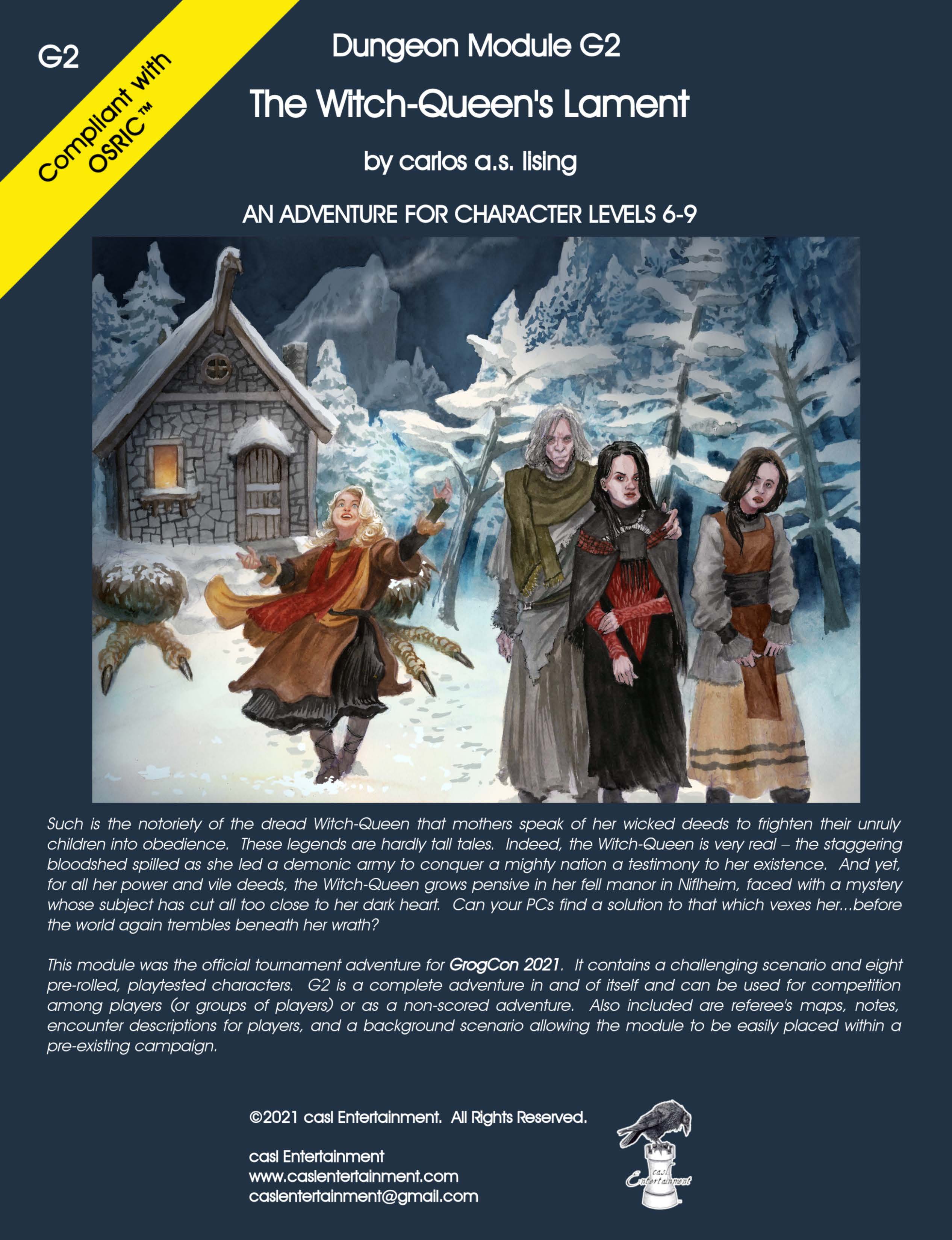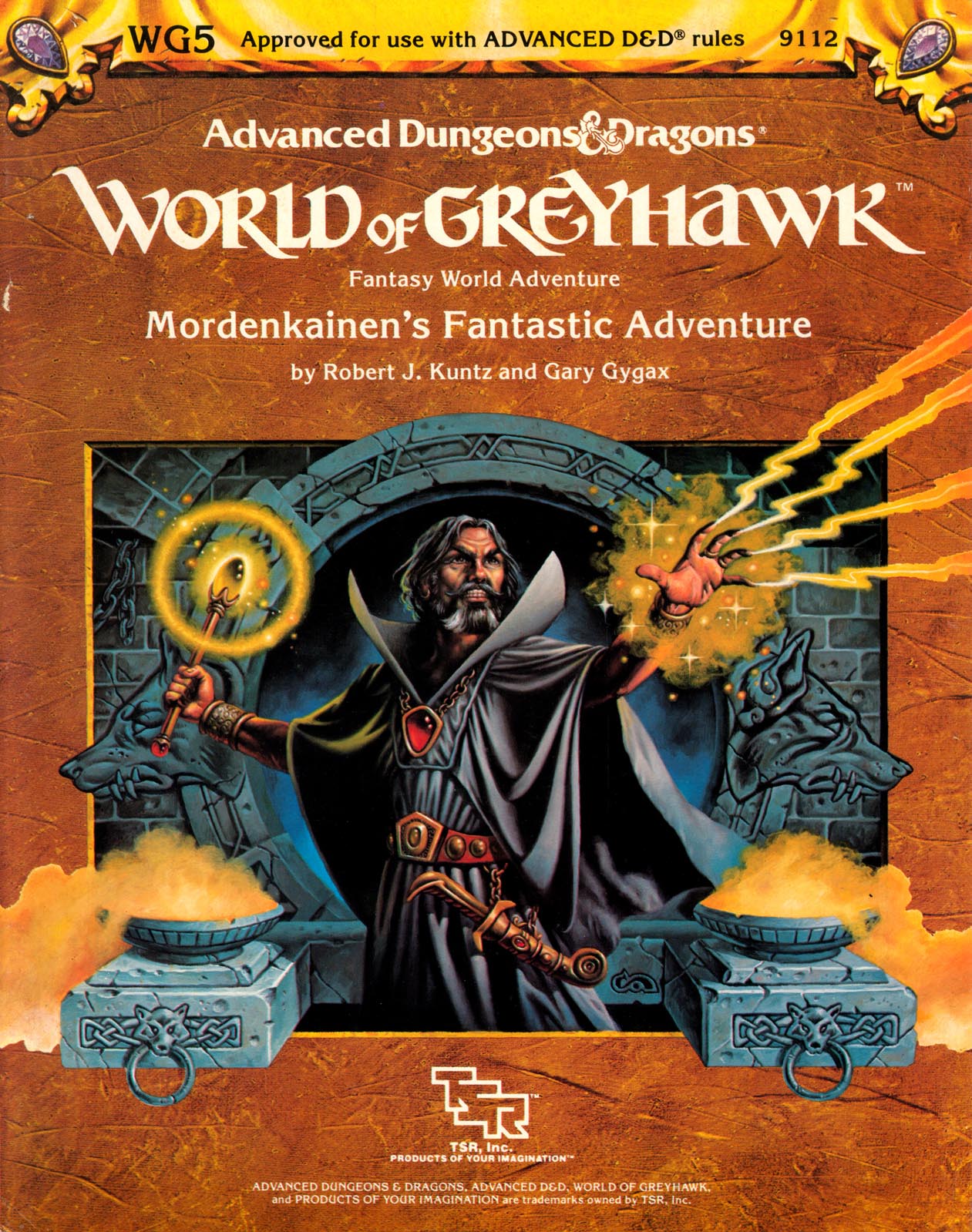In October, thoughts naturally gravitate toward the undead and other things that go bump in the night, so I've compiled some of my house rules and other variant rules about undead for your Halloween-inspired gaming!
Undead Variants - grodog's Standard House Rules
- All undead gain a +3 hp bonus after their HD: i.e., ghouls are 2+3 HD, ghasts are 4+3 HD, groaning spirit is 7+3, etc.
This is a natural extrapolation from the mid-tier undead like wight, wraith, mummy, specture, and vampire, and it does give them all a bit more staying power (and make them worth a bit more XP!). In my campaigns, zombies are now the lowest form of undead at 1+3 HD undead, and skeletons are promoted to the 2+3 HD undead: i.e., skeletons are tougher, faster (they get +1 on initiative!), and way cooler than zombies---as it should be, in the classic Harryhausen manner:

Jason and the Argonauts (1963) -
skeletons by Ray Harryhausen- All undead cause fear upon sight (with a range/radius of 1" per HD of the undead) in any creature with HD equal to or less than the undead's HD: i.e., zombies (1+3 HD in my games) cause fear in up to 1+3 HD monsters, and 0- and 1st-level PCs and NPCs.
A save vs. Spells negates the fear, with Wisdom bonuses/penalties applicable. If the save is failed, duration of the fear is 1 round per HD of the undead minus the PC victim’s level (with a minimum duration of 1 round). - For the past several years, I've used the DMG's Alternate Turning Matrix described in the table notes in the 1e DMG on page 76:The progression on the [clerical turning] table is not even. A variable
increment of 5% appears - 19, 20. It is included to reflect two things.
First, it appears to allow lower level clerics a chance to turn some of
the tougher monsters. It disappears (at 4th level) and reappears again
only when the clerics have reached a high level (8th and up). This
reflects the relative difficulty of these clerics when faced with turning
away the worst of evil creatures, but also allows the table to have them
completely destroy the weaker undead. If for some reason you must
have an exact progression, follow the columns for levels 1, 2, and 3,
correcting to the right from there - and thus rather severely penalizing
the clerics of upper levels, but by no means harming play balance.
Column 4 will then read, top to bottom: T, 4,7, 10, 13, 16, 19, 20. Do not
otherwise alter the table as it could prove to be a serious factor in
balance - weakening or strengthening clerics too greatly.
I began to adopt this rule after seeing vampires, ghosts, and liches basically made useless as monsters against high-level clerics turning via the standard table.
Another rationale for these rules (in my mind anyway!), is to differentiate clerics a bit more. Perhaps some deities that are particularly dedicated against undead grant their clericis the original turning tables, while most employ turning on the Alternate Matrix
When implemented, the Alternate Matrix for Clerics Turning Undead, et al, looks like this:
Thankfully provided in full DMG-compatible layout and font through the kind graces of users Jeff and Joe Mac on the Knights & Knaves Alehouse, and downloadable at https://onedrive.live.com/?authkey=%21AKCnK4DqVZ5ZJcU&cid=BAC8631E5B382A0F&id=BAC8631E5B382A0F%215041&parId=BAC8631E5B382A0F%21144680&o=OneUp.
Other Noteworthy Undead Variants
While many new types of undead monsters are introduced in various TSR adventures as well as in subsequent OSR publications, some interesting variant undead types remain buried in semi-obscurity and deserve a bit more visibility.
The Dungeon Masters Guide lists NPC vampires in the Monster Level IX and X tables of Appendix C. The Level IX vampire also has the full powers of a 7th to 10th level cleric (1d6+4), while the Level X vampire is also a 9th to 12th level magic-user (1d4+8).
Rob Kuntz's uderlings from RJK-2 Tower of Blood (published originally by Pied Piper Publishing and reprinted by Black Blade Publishing in 2014) are a cool undead gnomes that mix plane-of-shadow and vampiric powers:
 |
| RJK-2 Tower of Blood -- back over art by Jim Holloway |
Lenard Lakofka introduced several undead variants in his wonderful sandbox adventure L1 The Secret of Bone Hill, including some that were not reprinted in the MM2:
- Ghoulstirges: (AC; 7, MV: 3"/8", HD: 1 + 6, #AT: 1, D 1-4 plus paralysis and blood drain). On the first successful hit the ghoulstirge does 1-4 points of damage and paralyzes the victim unless a save vs. Paralyzation is made. Every round thereafter,
the ghoulstirge does 1-6 points of damage automatically, through blood drain. When the ghoulstirge has drained 12 points, it detaches from the victim and flies away to digest its
meal. The ghoulstirges are 70% likely to guard a nearby treasure (on the body of a former victim). The treasure will contain 6-60 gp, 8-80 ep, and is 40% likely to also contain either a miscellaneous potion or scroll with 1-4 1st and 2nd level clerical spells. - Skelter: (AC: 6, MV 12", HD 2 + 2, hp 16, #AT 1, D 1-10). The skelter, like the zombire, is the animated remains of a once very evil low-level magic-user. It is immune to the same attack forms as listed for the zombire and can cast the following first level spells: shield, sleep. It can be turned as per wights and has 42 gp.
- Zombire: (AC: 5, MV 12", HD 3 + 3, hp 18, #AT 1, D 2-12). The zombire is not slow like a zombie but might pretend to be so in order to deceive the party while approaching. A zombire is immune to hold, charm, sleep, and cold based spells, in addition to poison. It can be turned as per wraiths. In addition, the zombire, the animated corpse of a low-level magic-user, can cast the following spells: First level: magic missile, protection from good.
I have naturally flipped the power-level of the skelter relative to the zombire to match my house rules above.
Undead Variations - Standardized Immunities
While I've used the above house rules for ages now, other house rules that I've developed have been less-thoroughly playtested. They seemed like good ideas at the time, but I'm still not sure that they're necessarily worth the effort, overall.
On example is that all undead benefit from a variety of different levels of immunities, which I codified into letters/types A-E, as written in the inside of my MM cover:
- Immune to sleep, charm, hold, energy drain, and generic mind-affecting spells (see Wisdom listing); also gain frost resistance (save at +4, -1/die damage)
- Immune to poison, paralyzation, immune to cold-based attacks
- Immune to aging, ray of enfeeblement/strength drain, black flame; also gain electricity resistance (save at +4, -1/die damage)
- Immune to death magic, exorcism, magic jar/possession, body sympathy; immune to lightning-based attacks
- Immune to insanity (including feeblemind, confusion, symbol of insanity), polymorph
I defined most undead immunities for creatures from the MM, FF, and MM2---along with some additions from Dragon Magazine---as follows (shadows and slow shadows don’t appear on the list since they’re not undead IMC):
- apparition – ?
- bloody bones (?) – ?
- coffer corpse – ?
- crypt thing (an insane/crazed/devolved lich?) -
- death knight – E
- demilich – E+
- eye of fear and flame – ?
- ghast – B
- ghost – C
- ghoul – A
- groaning spirit – D
- haunt – ?
- huecuva – ?
- juju zombie – D
- lich – E
- monster skeleton - C
- monster zombie - B
- mummy – B
- necrophidius – ?
- penanggalan – ?
- revenant – E (C?)
- sheet ghoul – ?
- sheet phantom – ? (do these two really even exist in my games??)
- shoosoova (Dragon #63) – C
- skeleton – C (B?)
- skeleton warrior – E
- son of kyuss – C
- spectral stalker (my renamed midnight stalker from Grenadier's Monster Manuscript) – ?
- spectre – D
- tapper (my renamed rapper from Dragon #58) - C
- vampire – C
- wight – B
- wraith – C
- zombie – A









